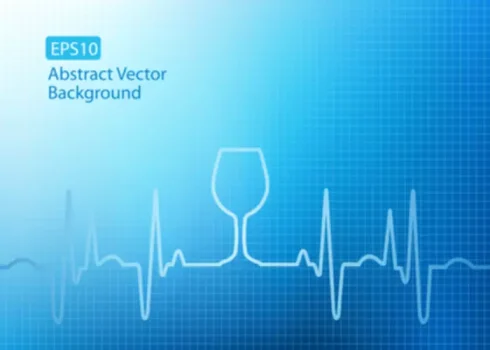The Collaborative Study on the Genetics of Alcoholism: An Update PMC

A detailed description of these findings is outlined in the accompanying review (2. Sample and Clinical Data). The inclusion of data from different ancestral groups in this study cannot and should not be used to assign or categorize variable genetic risk for substance use disorder to specific populations. As genetic information is used to better understand human health and health inequities, expansive and inclusive data collection is essential. NIDA and other Institutes at NIH supported a recently released report on responsible use and interpretation of population-level genomic data, by the National Academies of Sciences, Engineering, and Medicine. Compared to other genetic predictors, the genomic pattern identified here was also a more sensitive predictor of having two or more substance use disorders at once.

IDENTIFYING AN INTEGRATED APPROACH FOR AUD RESEARCH

The term “phenotype” refers to any observable characteristic or behavior of an individual. This article does not contain any studies with human or animal subjects performed by the author. MVP is a biobank supported by the United States Department of VA with rich phenotypic data collected using questionnaires and the VA electronic health record system. Contributors to this article for the NIAAA Core Resource on Alcohol include the writer for the full article, content contributor to subsections, reviewers, and editorial staff. We invite healthcare professionals to complete a post-test after reviewing this article to earn FREE continuing education (CME/CE) credit, which is available for physicians, physician assistants, nurses, pharmacists, and psychologists, as well as other healthcare professionals whose licensing boards accept APA or AMA credits.
The Collaborative Study on the Genetics of Alcoholism: An Update
This CME/CE credit opportunity is jointly provided by the Postgraduate Institute for Medicine and NIAAA. genetics of alcoholism That doesn’t mean you’ll absolutely develop AUD if you have a family member living with the condition. You may have a higher genetic predisposition, but the underlying causes of AUD are multifaceted and complex. Published today in Nature Mental Health, the study was led by researchers at the Washington University in St. Louis, along with more than 150 coauthors from around the world.
Associated Data
The investigators chose a family study design to allow the use of multiple methods of genetic analysis. Systematic recruitment from outpatient and inpatient alcoholism treatment facilities and assessment of families initially was carried out at six sites across the United States, with a seventh site more recently. The study also included a large sample of control families that were randomly selected from the community. For the analyses, the researchers chose a split-sample design—two groups of subjects (i.e., an initial sample and a replication sample) were analyzed independently; this approach allows investigators to examine the reproducibility of the initial study findings.

And J.W.S. provided critical support regarding phenotypes and data in individual datasets. The GI tract is exposed to very high levels of alcohol as it passes throughthe mouth, esophagus, stomach and intestinal tract, and most ethanol passes throughthe liver before entering the circulation. Alcohol levels in common drinks rangefrom approximately 5% (1.1 M) for beer, 11-15% for wine (∼3M) and 40% for spirits (∼9 M). The oral cavity and esophagus aredirectly exposed to those levels, and the liver is exposed to high levels from theportal circulation. Thus it is not surprising that diseases of the GI system,including cirrhosis, pancreatitis, and cancers of the upper GI tract are affected byalcohol consumption80-86. In analyzing the proteins they had identified, the researchers found what they describe as minimal overlap between genes and the proteins they code for and the different types of AUD.
COGA’s intergenerational design has, in addition to identifying genetic risk factors, contributed to our understanding of the role of social genetic mechanisms50, 52, 64, 65, 66 in the interplay between genetic liability and the socio‐environmental milieu (e.g., References 40, 48, 67, 68). Diversity in the data have driven gene discoveries within our dataset (e.g., Reference 44) and in collaboration with others (e.g., References 5, 55, 69). Our ability to develop iPSCs from individuals with different genetic loading is producing insights into properties of cells derived from persons with archival electrophysiological and behavioral phenotyping, and how the cells differentially respond to ethanol exposure.

DNA Regions with Susceptibility Genes
With current review, we aim to present the recent advances in genetic and molecular studies of AUDs. Recent successes in genetic studies of AUDs will definetely motivate researchers and lead to better therapeutic interventions for this complex disorder. While genetics can account for up to 60% of AUD risk, not everyone with a family history of AUD will develop the condition. AUD isn’t directly caused by genetics, but genetics may predispose you to developing AUD later in life.
Supplementary Data 2
- The accompanying review (3. Brain Function) covers the available brain function data and resulting findings in detail.
- Over the next few years, we anticipate theidentification of additional common and rare variants contributing to the risk ofalcohol dependence.
- To improve the specificity of these codes, individuals with at least two instances of the phecode were considered cases, those with no instance of the phecode controls, and those with one instance of a phecode or a related phecode as other.
- Because alcoholism is a complex genetic disorder, the COGA researchers expected that multiple genes would contribute to the risk.
- Individual reviews in this issue provide detailed illustrations of the ways in which COGA data have contributed towards advancing our understanding of the etiology, course and consequences of AUD, and pathways from onset to remission and relapse.
- Exome and whole genome sequencing studies for the detection of rare variants are beginning to emerge.
Drug use and addiction represent a public health crisis, characterized by high social, emotional, and financial costs to families, communities, and society. There has been limited knowledge of the molecular genetic underpinnings of addiction until now. Further, most clinical trials and behavioral studies have focused on individual substances, rather than addiction more broadly. The ISO 9001 standard is an internationally recognised standard that is based on a number of quality management principles including a strong customer focus, the management of process change, effective methods of reducing non- compliance, and the continual improvement in the quality of our services. Some people drink every day, they note, others just on weekends—and others go on drinking binges.

DNA Regions Related to Symptoms of Alcoholism
Although standard diagnostic systems for alcoholism can reliably determine who needs treatment, the diagnostic criteria used in these systems comprise problems in many domains of functioning. This means that two people with the same diagnosis (e.g., alcohol dependence as defined in the Diagnostic and Statistical Manual of Mental Disorders, Third Edition, Revised DSM–III–R of the American Psychiatric Association APA 1987) may have different sets of symptoms, greatly complicating genetic analyses. Therefore, COGA researchers gathered a detailed psychiatric history of each participant, along with electrophysiological data (electroencephalograms EEGs and event-related potentials ERPs).
This study, conducted by researchers at Scripps Research, presents critical evidence that AUD could act as a risk factor for AD, impacting both inflammation and cellular signalling pathways in the brain. By focusing on molecular similarities, this research opens avenues for novel therapeutic strategies and highlights the importance of addressing alcohol consumption in Alzheimer’s prevention and treatment. RECENT research has revealed that alcohol use disorder (AUD) and Alzheimer’s disease (AD) share significant patterns of gene dysregulation, suggesting that alcohol consumption may accelerate the progression of Alzheimer’s. Prior research and anecdotal evidence have shown that not only do people have different alcohol consumption habits, but they behave differently after consumption. In new research, the team focused only on those types of drinking behaviors that they deemed problematic, which they describe as alcohol use disorder (AUD). Phenotypic data were collected from MVP participants using questionnaires and the VA EHR and a blood sample was obtained for genetic analysis.